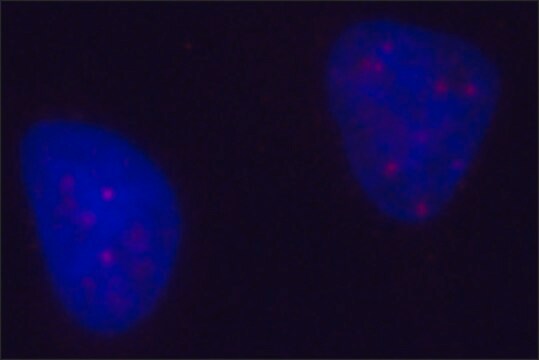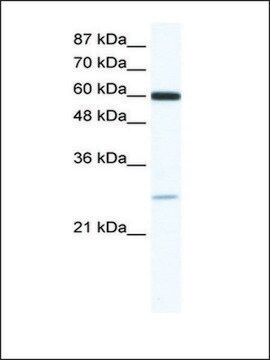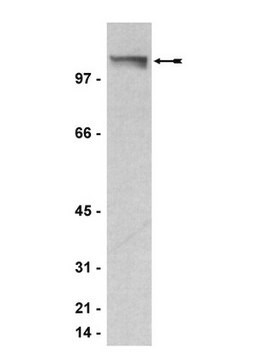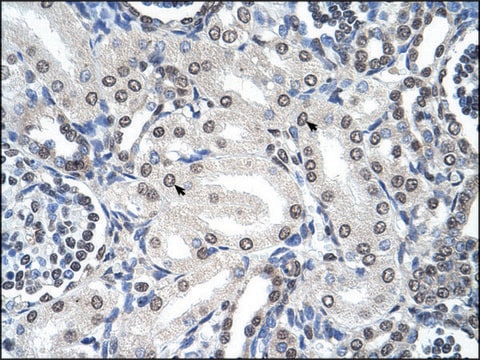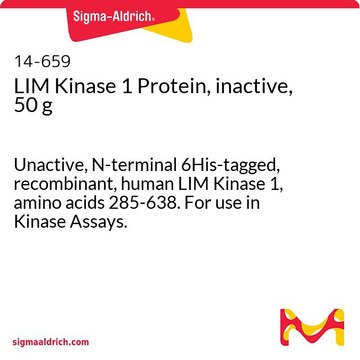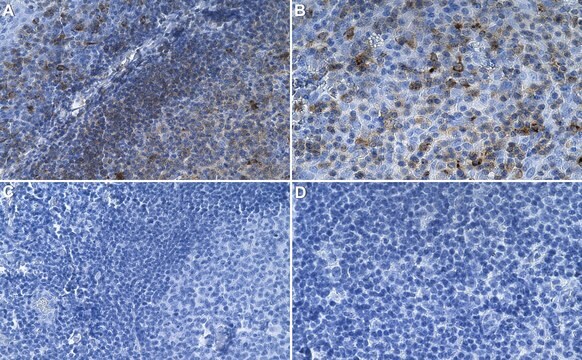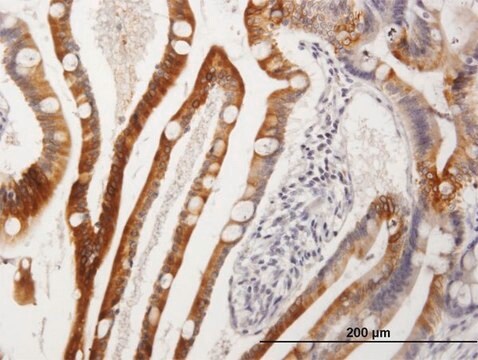MABE175
Anti-PML Isoform II Antibody, clone 1A8.1
clone 1A8.1, from mouse
Synonym(e):
PML-2, PML-II, Protein PML isoform II, Promyelocytic leukemia protein isoform II, RING finger protein 71 isoform II, TRIM19kappa, Tripartite motif-containing protein 19 isoform II
About This Item
Empfohlene Produkte
Biologische Quelle
mouse
Qualitätsniveau
Antikörperform
purified immunoglobulin
Antikörper-Produkttyp
primary antibodies
Klon
1A8.1, monoclonal
Speziesreaktivität
human
Methode(n)
immunocytochemistry: suitable
western blot: suitable
Isotyp
IgG1κ
NCBI-Hinterlegungsnummer
UniProt-Hinterlegungsnummer
Posttranslationale Modifikation Target
unmodified
Angaben zum Gen
human ... PML(5371)
Allgemeine Beschreibung
Spezifität
Immunogen
Anwendung
Epigenetik & nukleäre Funktionen
Chromatin-Biologie (ChIP)
Immunocytochemistry Analysis: 10 µg/mL from a representative lot immunostained 4% paraformaldehyde-fixed HEK293 cells transfected with human PML isoform II by fluorescent immunocytochemistry (Courtesy of Professor Ygal Haupt, Peter MacCallum Cancer Centre, East Melbourne, Australia).
Qualität
Western Blotting Analysis: 0.5 µg/mL of this antibody detected the exogenously expressed human PML-2 in 10 µg of lysate from transfected HEK293 cells.
Zielbeschreibung
Physikalische Form
Lagerung und Haltbarkeit
Sonstige Hinweise
Haftungsausschluss
Sie haben nicht das passende Produkt gefunden?
Probieren Sie unser Produkt-Auswahlhilfe. aus.
Lagerklassenschlüssel
12 - Non Combustible Liquids
WGK
WGK 1
Flammpunkt (°F)
Not applicable
Flammpunkt (°C)
Not applicable
Analysenzertifikate (COA)
Suchen Sie nach Analysenzertifikate (COA), indem Sie die Lot-/Chargennummer des Produkts eingeben. Lot- und Chargennummern sind auf dem Produktetikett hinter den Wörtern ‘Lot’ oder ‘Batch’ (Lot oder Charge) zu finden.
Besitzen Sie dieses Produkt bereits?
In der Dokumentenbibliothek finden Sie die Dokumentation zu den Produkten, die Sie kürzlich erworben haben.
Unser Team von Wissenschaftlern verfügt über Erfahrung in allen Forschungsbereichen einschließlich Life Science, Materialwissenschaften, chemischer Synthese, Chromatographie, Analytik und vielen mehr..
Setzen Sie sich mit dem technischen Dienst in Verbindung.